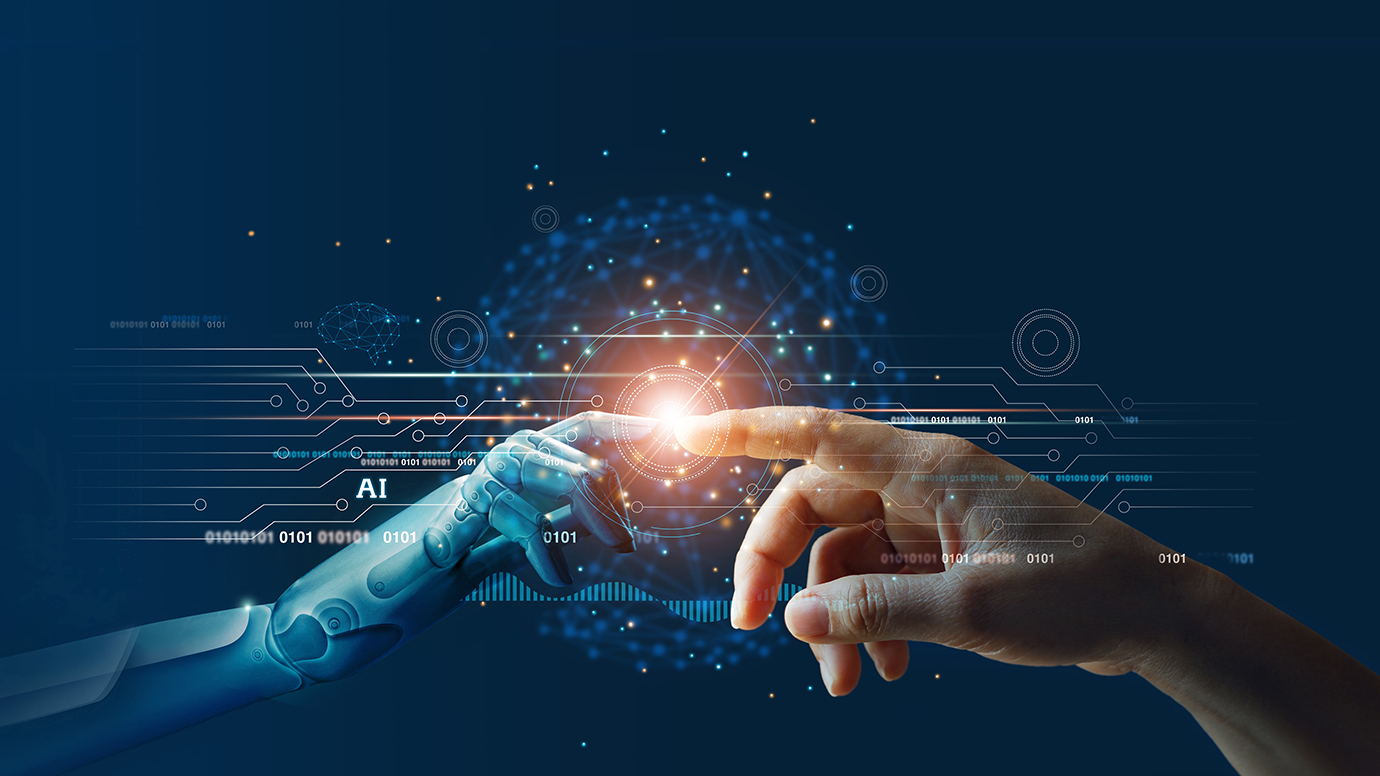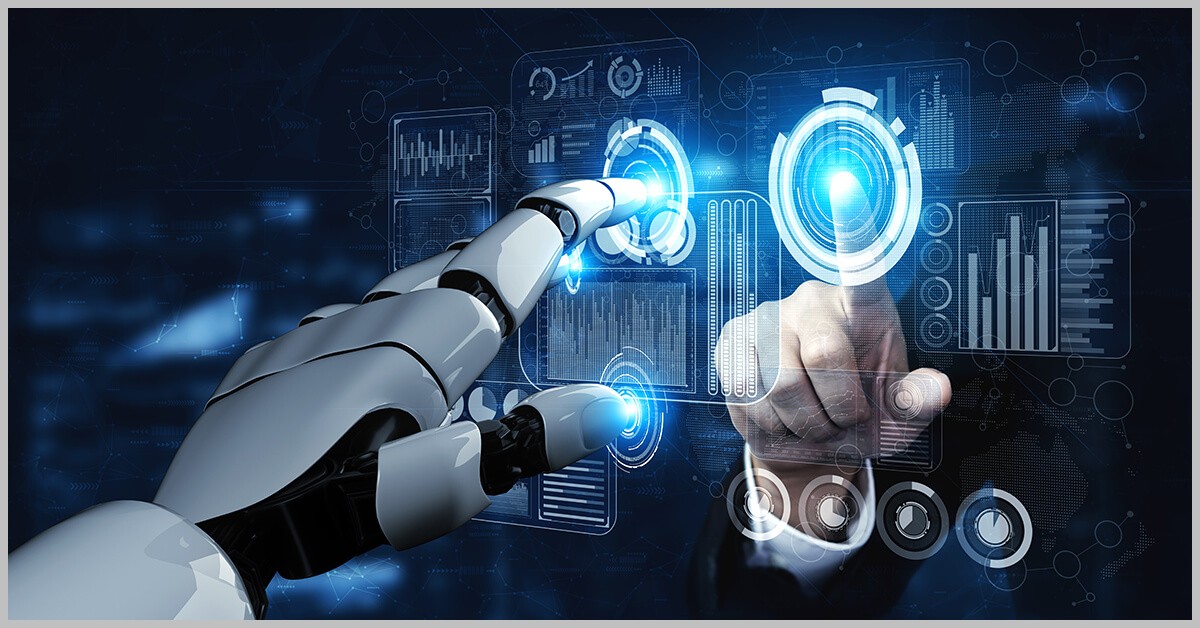In many businesses, artificial intelligence (AI) is now a key driver of innovation. But what if we could forge a mutually beneficial alliance by fusing the strength of AI and human intelligence? This is the idea of using AI to increase human intelligence. We can increase human capacities, enhance decision-making, and spur innovation to new heights by utilizing AI technologies.
The goal of using AI to increase human intelligence is to enable people to do more, not to replace them. Large-scale data processing, pattern analysis, and insight generation are all capabilities of AI that humans might not be able to do on their own. This human-AI partnership has the power to completely transform industries and usher in an era of limitless invention.
The Benefits of Augmenting Human Intelligence with AI
There are several advantages to integrating AI with human intellect in a variety of fields. Enhanced productivity and efficiency are two major benefits. Repetitive jobs can be automated by AI algorithms, freeing up human resources to work on more strategic and difficult tasks. This helps people focus on activities that call for creativity, critical thinking, and problem-solving abilities in addition to saving time.
Better decision-making is another advantage of using AI to increase human intelligence. Large volumes of data may be analyzed by AI algorithms, which can also spot trends and produce insights instantly. Better results can be achieved as a result of humans being able to make data-driven, better-informed decisions. AI-powered decision-making has the potential to dramatically increase efficacy and efficiency in a variety of industries, including manufacturing, banking, and healthcare.
Furthermore, enhancing human intelligence using AI can result in better consumer experiences. Businesses may improve consumer interactions by offering virtual assistants, predictive analytics, and personalized suggestions through the use of AI technology like machine learning and natural language processing. This promotes client loyalty and business expansion in addition to raising customer satisfaction.
AI and Human Intelligence Augmentation in Various Industries
The potential of augmenting human intelligence with AI is vast and applicable to a wide range of industries. Artificial Intelligence (AI) has applications in healthcare that include diagnosis support, customized treatment planning, and image analysis. This can significantly improve patient outcomes and reduce the burden on healthcare professionals.
In finance, AI algorithms can analyze vast amounts of financial data, detect fraudulent activities, and make real-time trading decisions. This not only improves the accuracy and efficiency of financial operations but also reduces risks and enhances profitability.
In manufacturing, AI-powered robots and automation systems can optimize production processes, improve quality control, and enhance worker safety. This results in more output, lower expenses, and more general efficiency.
These are just a few examples of how AI can augment human intelligence in various industries. The possibilities are endless, and the potential for driving innovation is immense.
Best Practices for Implementing AI in Human Intelligence Augmentation
Implementing AI in human intelligence augmentation requires careful planning and consideration. Observe the following recommended practices:
- Identify the right use cases: Start by identifying areas where AI can bring the most significant value. Focus on tasks that are repetitive, time-consuming, or require complex data analysis.
- Ensure data quality and integrity: AI algorithms rely on high-quality data for accurate analysis and decision-making. Ensure that the data used for training AI models is clean, reliable, and representative of real-world scenarios.
- Collaborate with domain experts: Involve domain experts throughout the AI implementation process. Their expertise and insights are crucial for understanding the nuances of the industry and fine-tuning AI algorithms accordingly.
- Address ethical considerations: AI algorithms should be designed and implemented with ethical considerations in mind. Ensure transparency, fairness, and accountability in AI systems to mitigate biases and ensure responsible use.
- Provide training and support: Equip employees with the necessary skills and knowledge to work alongside AI systems. Training programs and continuous support are essential for the successful integration of AI into human intelligence.
By following these best practices, organizations can effectively harness the power of AI to augment human intelligence and drive innovation.
Case Studies on Successful AI and Human Intelligence Augmentation
To better understand the potential of AI and human intelligence augmentation, let’s explore a few case studies:
- Healthcare: In the field of radiology, AI algorithms have been developed to analyze medical images and assist radiologists in diagnosing various conditions. These algorithms can detect patterns and anomalies that may be missed by the human eye, leading to more accurate and timely diagnoses.
- Finance: Many financial institutions are leveraging AI-powered chatbots and virtual assistants to enhance customer interactions. These AI systems can provide personalized recommendations, answer customer queries, and even assist in financial planning, leading to improved customer experiences and increased customer satisfaction.
- Manufacturing: Companies in the manufacturing industry are adopting AI-powered robots and automation systems to optimize production processes. These robots can perform complex tasks with precision and accuracy, leading to increased productivity and improved product quality.
These case studies demonstrate the successful integration of AI into human intelligence, resulting in improved outcomes, enhanced efficiency, and driving innovation in their respective industries.
Ethical Considerations and Challenges in AI and Human Intelligence Augmentation
While the integration of AI and human intelligence has immense potential, it also raises ethical considerations and challenges that need to be addressed. One of the key concerns is the potential bias in AI algorithms. If AI systems are trained on biased or incomplete data, they may perpetuate existing biases or discriminate against certain groups. It is crucial to ensure transparency, fairness, and accountability in AI systems to mitigate biases and ensure ethical use.
A further obstacle is how AI will affect jobs. There is fear that as AI technologies develop, human labor may be replaced, creating job dislocation. Studies, however, indicate that rather than replacing human capabilities, AI is more likely to enhance them. Programmes for reskilling and upskilling workers are crucial to provide them with the skills they need to collaborate with AI systems.
Privacy and security are also significant challenges in AI and human intelligence augmentation. AI algorithms often require access to large amounts of personal data, raising concerns about data privacy and potential misuse. Organizations must prioritize data protection and implement robust security measures to safeguard sensitive information.
Addressing these ethical considerations and challenges is essential for the responsible and sustainable integration of AI into human intelligence augmentation.
Tools and Technologies for Augmenting Human Intelligence with AI
There are various tools and technologies available for augmenting human intelligence with AI. Some of the key ones include:
- Machine Learning: Machine learning algorithms enable AI systems to learn from data and make predictions or decisions without explicit programming. They are widely used in pattern recognition, recommendation systems, and predictive analytics.
- Natural Language Processing (NLP): NLP makes its possible for AI systems to decipher and comprehend human language. It is used in chatbots, virtual assistants, and sentiment analysis to enhance customer interactions and provide personalized experiences.
- Computer Vision: Computer vision technologies enable AI systems to analyze and interpret visual data, such as images and videos. They are used in various applications, including object recognition, facial recognition, and autonomous vehicles.
- Robotic Process Automation (RPA): RPA technologies automate repetitive and rule-based tasks by mimicking human actions. They are widely used in industries such as finance, healthcare, and manufacturing to improve efficiency and productivity.
These are just a few examples of the tools and technologies available for augmenting human intelligence with AI. The choice of tools depends on the specific use case and industry requirements.
Training and Upskilling for AI and Human Intelligence Augmentation
To fully leverage the potential of AI and human intelligence augmentation, organizations need to invest in training and upskilling programs. These programs should focus on equipping employees with the necessary skills to work alongside AI systems and leverage their capabilities effectively.
Training programs can include AI literacy courses to provide a basic understanding of AI concepts and technologies. Employees can also be trained on specific tools and technologies relevant to their roles and responsibilities. Additionally, soft skills such as critical thinking, problem-solving, and creativity can be emphasized to complement AI capabilities.
Continuous learning and development should be encouraged to keep up with the evolving AI landscape. This can be done through online courses, workshops, and collaboration platforms where employees can learn from each other and share best practices.
By investing in training and upskilling, organizations can create a workforce that is ready to embrace the power of AI and drive innovation.
Future Trends in AI and Human Intelligence Augmentation
The field of AI and human intelligence augmentation is continuously evolving, and there are several trends that we can expect to see in the future:
- Explainable AI: As AI systems become more complex and sophisticated, there is a growing need for transparency and explainability. Explainable AI aims to provide insights into how AI algorithms make decisions, enabling humans to understand and trust AI systems.
- Collaborative AI: The future of AI is not about humans versus machines but rather about humans and machines working together in a collaborative partnership. Collaborative AI systems will leverage the strengths of humans and AI to achieve better outcomes and drive innovation.
- Edge Computing: With the proliferation of IoT devices and the need for real-time processing, edge computing is gaining prominence. Edge computing involves processing data locally on edge devices, reducing latency and enabling faster decision-making.
- Responsible AI: As AI becomes more integrated into our daily lives, responsible AI practices will become increasingly important. This includes addressing biases, ensuring fairness and accountability, and prioritizing ethical considerations in AI systems.
These trends indicate an exciting future for AI and human intelligence augmentation, where innovation and collaboration will be at the forefront.
Conclusion: Accepting AI’s Potential to Spur Innovation
Augmenting human intelligence with AI has the potential to transform industries, improve decision-making, and drive innovation to new heights. By leveraging AI technologies, organizations can enhance efficiency, improve customer experiences, and achieve better outcomes.
However, the integration of AI into human intelligence comes with ethical considerations and challenges that need to be addressed. Transparency, fairness, and accountability are crucial for responsible AI practices.
By following best practices, investing in training and upskilling, and staying updated with future trends, organizations can embrace the power of AI and create a future where innovation knows no bounds.




